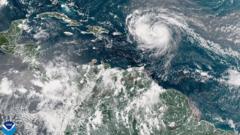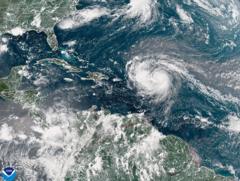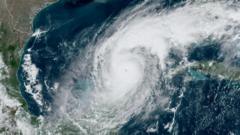The Department of Defense has unexpectedly announced a one-month extension for the vital satellite data necessary for monitoring hurricane movements, now available until July 31 instead of the initially proposed June 30 cutoff. This decision comes amid significant concerns regarding cybersecurity risks, as revealed by the National Oceanic and Atmospheric Administration (NOAA) after a request from a NASA scientist prompted a reconsideration of the original plan.
Initially, NOAA had intended to cut off access to data from three satellites that play a crucial role in hurricane forecasting, expressing only that “recent service changes” were the cause of the discontinuation. Meteorologists and climate scientists expressed alarm over the possible ramifications of losing this data, warning that it could severely degrade forecast quality, thus increasing risks to lives and property during the hurricane season.
Experts noted that the abrupt decision by the Department of Defense had left many in the scientific community blindsided. Michael Lowry, a veteran at the National Hurricane Center and FEMA, remarked how essential data has been preserved only temporarily, emphasizing that the extension does not cover the peak months in hurricane season when the risk of powerful storms and rapid intensification surges.
The impacts of this data cessation extend beyond hurricane forecasting. The satellite data is also vital for scientific research on sea ice variations in the Arctic and Antarctic since the 1970s. Without this information, tracking significant climatic changes in these remote regions becomes increasingly difficult. Dr. Sharon Stammerjohn from the University of Colorado Boulder underscored the importance of such data for understanding global climate and noted the public's focus is usually on hurricanes rather than polar sea ice.
While the European Space Agency and Japan’s aerospace agency offer some alternative satellite data, challenges of differing calibration and resolution complicate their usability for ongoing research. This situation highlights the intricate dependencies within climate monitoring infrastructures that are vital for responding to both immediate weather threats and long-term climate trends.




















